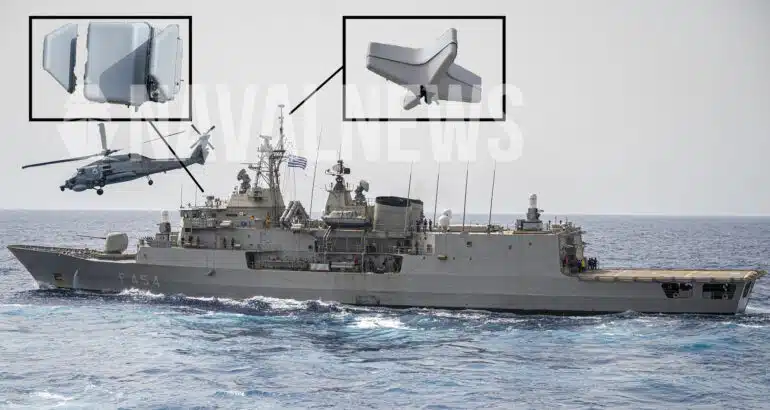According to information from Onalert.gr, the construction of the “Made in Greece” second anti-drone electronic warfare system “CENTAUR” is underway at the facilities of the Hellenic Aerospace Industry (EAB) in Tanagra.
This is an upgraded naval version of the system, which has already been installed on the frigate “Spetsai,” operating for approximately two months in the Red Sea and the Gulf of Aden.

The specific anti-drone system was also used by the frigates “Hydra” and “Psara” during their mission as part of the “ASPIDS” operation, with notable success. It proved extremely effective in jamming drones launched by the Houthis and, in at least one instance, managed to cut off a drone from its ground control station, resulting in its crash into the sea.
Specifically, the made-in-Greece system detected a swarm of armed drones approaching the area, well before the ship’s other sensors did. The passive system was immediately activated, locked onto the nearest drone, and essentially neutralized it.

The acquisition of the “CENTAUR” anti-drone system and its initial deployment on all four MEKO class “Hydra” frigates is a decision taken by the Naval Command, which has already received the “green light” from the political leadership of the Ministry of National Defense.
The relevant program is managed by the newly established Hellenic Center of Defense Innovation, and only formal procedures remain before the contract with EAB is signed. However, the construction of the second “CENTAUR” anti-drone system has already begun, aiming for the system to be ready as soon as possible to equip another fleet frigate.
Simultaneously with the system’s construction, its development and upgrade are advancing to reach its highest configuration level. At this point in time, it has already surpassed TRL (Technology Readiness Level) 7, with TRL 9 as the highest.

TRL 7 translates to successful use of the prototype in an operational environment, as has already happened with the “CENTAUR” in the Red Sea. Following this is TRL 8, with the system’s completion and certification to advance to TRL 9, which pertains to proven operational use of the already certified system.
Before being deployed on the “Hydra” and “Psara” frigates, the “CENTAUR” was successfully tested dozens of times on the ground, followed by tests over ships both in port and at sea, although it was not initially a naval version. The system demonstrated its capabilities from the outset, even at distances exceeding 10 miles, which is significant for the defense of critical weapons systems, installations, and ships.
The tests of the “CENTAUR” showed that it could be a solution for countering Turkish drones like the Bayraktar, which have similar capabilities to the Houthis’ drones.
The cost of each unit, as previously revealed by Onalert.gr, is considered particularly low, ranging at 1.3 million euros, and in the case of mass production, it is expected to drop below 1 million euros. The “CENTAUR” anti-drone system was entirely designed and manufactured by EAB, using specialized software acquired and configured according to the needs of the modern operational field.

